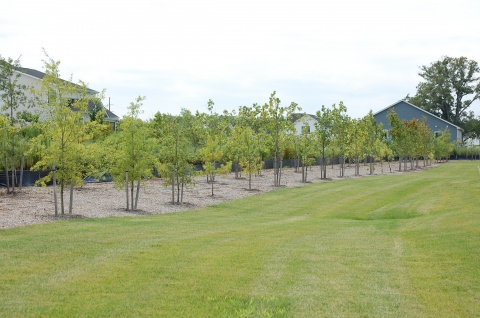
Georgetown, Del., Aug. 27, 2024: Sussex County is giving Mother Nature a little extra space and breathing room when it comes to new development.
County Council, at its Tuesday, Aug. 27, 2024, meeting, approved a measure known as the ‘perimeter buffer’ ordinance that updates County code to strengthen requirements for buffering and forest retention along the boundaries of residential development. The new rules take effect six months from adoption, in February 2025.
The initiative dates back to the County’s 2018 Comprehensive Plan; in the past year, County officials formulated the ordinance following workshops and hearings involving County Council, the Planning & Zoning Commission, and County staff, as well as input from scores of constituents concerned about the aesthetics and protections when it comes to the county’s natural areas, namely established forests and woodlands.
Among other things, the ordinance promotes the use of natural woodlands as buffers, when possible, as opposed to allowing developers to clear cut existing trees and plant saplings in their place; sets rules for when any new trees must be planted; establishes better coordination of the timing of home building versus buffer construction; and steps up County inspections to buffer areas to ensure compliance.
“Ultimately, I think this comes down to a better design. We’re building a better widget,” County Administrator Todd F. Lawson said. “This is going to improve the way developments look and feel in Sussex County moving forward.”
County officials said the ordinance came about after constituents voiced concerns in recent years about development and its effects on Sussex County’s natural resources, wanting to ensure the County had the appropriate protections in place to preserve the qualities that make southern Delaware special.
County staff, at the direction of elected officials, drafted the ordinance to try to strike a balance that would not inhibit, but enhance, development while better protecting existing natural features.
To give developers flexibility while recognizing public concerns, the ordinance encourages the use of existing woodlands for new buffers, but establishes a two-for-one mitigation requirement in those instances when older, established trees have to be removed. The ordinance also sets penalties of $10,000 per quarter acre of disturbed area for clear-cutting trees in a designated buffer, a practice that, up until now, had been permitted under County code. The code also will now require that buffering be addressed at the onset of a project, as opposed to the end, so as to ensure trees, both established and newly planted, have had adequate time to reach viability and not suffer any adverse effects from adjacent construction.
“That effectively flips the sequence, so buffers are being preserved or installed first, before any housing is constructed,” Mr. Lawson said. “That’s a pretty big step forward in our land use policy and thinking, one that we believe addresses a frequent concern we’ve heard over the years from residents.”
County Council President Michael H. Vincent said the ordinance is the product of the public voicing its concerns, and elected and appointed officials responding in a way that offers enhanced protections while still allowing for the county to grow in a sensible manner.
“Growth is inevitable, but how we manage it – and what we leave for future generations – says something about us as a community. It really is our legacy,” Mr. Vincent said. “This ordinance addresses some long-held building practices that might have worked in another time, but are less desirable in today’s environment. I think it’s a compromise that hopefully will make everyone happy, and certainly one that makes for a better Sussex County, today, tomorrow, and beyond.”
To view a copy of the ordinance, visit https://sussexcountyde.gov/ordinances.
###
